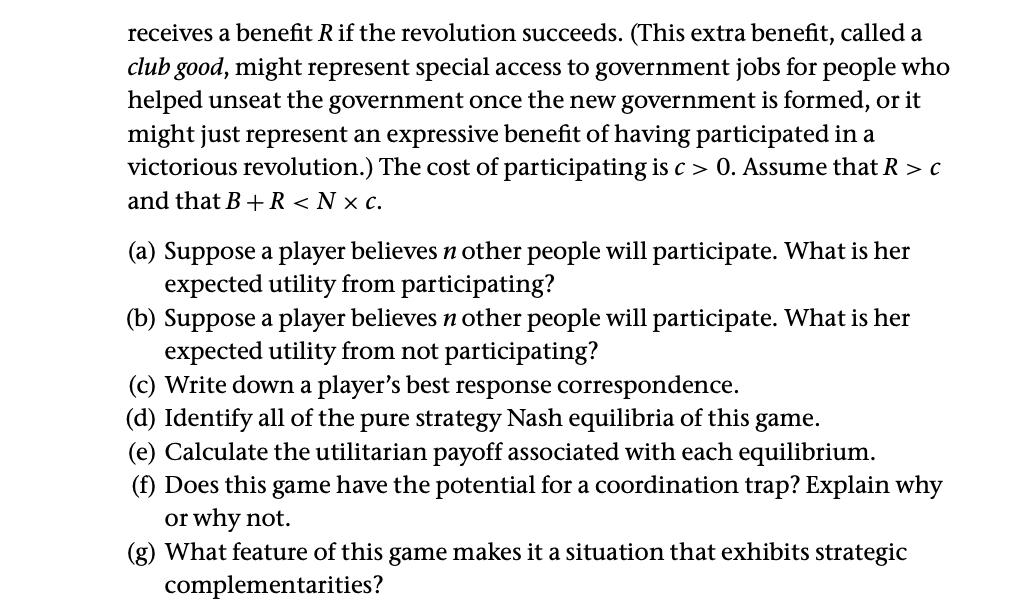Answered step by step
Verified Expert Solution
Question
1 Approved Answer
1. Consider a model of revolutions. Society is made up of N > 1 people. Simultaneously, each person chooses whether or not to participate.


1. Consider a model of revolutions. Society is made up of N > 1 people. Simultaneously, each person chooses whether or not to participate. If n people participate, the probability the revolution succeeds is . If the revolution succeeds, each member of society receives the benefits of a public good worth B. In addition, each person who participated in the revolution receives a benefit R if the revolution succeeds. (This extra benefit, called a club good, might represent special access to government jobs for people who helped unseat the government once the new government is formed, or it might just represent an expressive benefit of having participated in a victorious revolution.) The cost of participating is c > 0. Assume that R > c and that B+R < N c. (a) Suppose a player believes n other people will participate. What is her expected utility from participating? (b) Suppose a player believes n other people will participate. What is her expected utility from not participating? (c) Write down a player's best response correspondence. game. (d) Identify all of the pure strategy Nash equilibria of this (e) Calculate the utilitarian payoff associated with each equilibrium. (f) Does this game have the potential for a coordination trap? Explain why or why not. (g) What feature of this game makes it a situation that exhibits strategic complementarities?
Step by Step Solution
There are 3 Steps involved in it
Step: 1

Get Instant Access to Expert-Tailored Solutions
See step-by-step solutions with expert insights and AI powered tools for academic success
Step: 2

Step: 3

Ace Your Homework with AI
Get the answers you need in no time with our AI-driven, step-by-step assistance
Get Started


